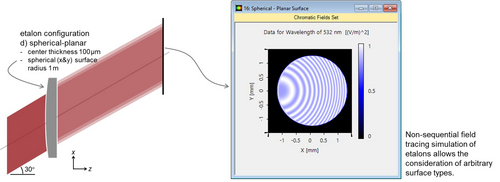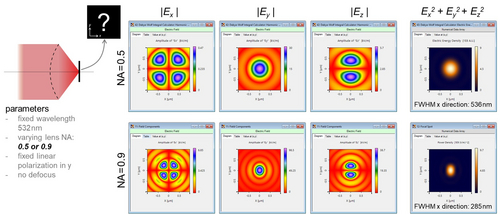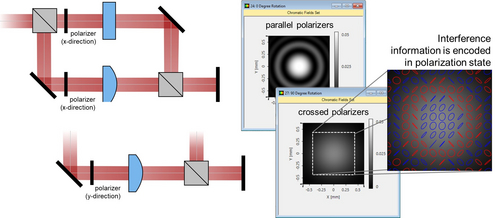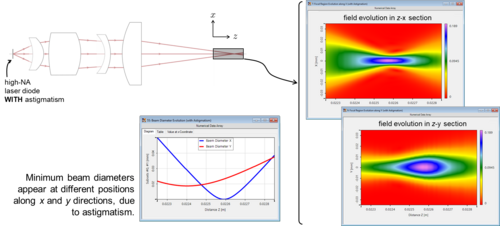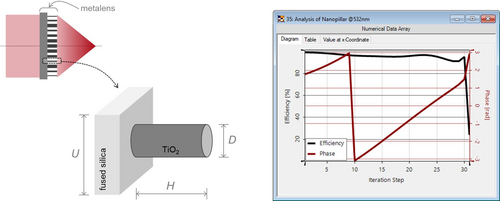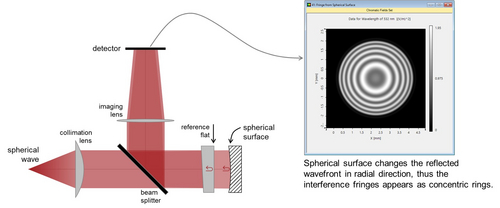What’s new in our Optical Modeling and Design Software?
Modeling of Optical Etalons
Optical etalons, in the simple structure of a transparent plate, can form Fabry-Pérot resonators and therefore be used for spectral and/or angular selection. The non-sequential field tracing technique in VirtualLab Fusion enables the accurate modeling of different types of etalons, with either planar or curved surfaces and coatings. As a typical application, we demonstrate the optical setup for the examination of sodium D lines with an etalon as the key component.
Read moreVirtualLab Fusion summer release 2019
We will present the new summer release 2019 of our Fast Physical Optics software VirtualLab Fusion at the LASER World of Photonics 2019 in hall B1, booth 209.
LASER Exhibition | 24 – 27 June
Read moreDebye-Wolf Integral
It is established that vectorial effects are non-negligible in high-NA imaging systems, like microscopes. The lens surface and material specifications must, technically, be known in order to take the exact vectorial effects into account. However, such detailed information of most commercial objective lenses is not freely available in general. For such situations, you have the Debye-Wolf integral calculator as one possible way out – it is a well-known idealized model for lens systems which is not restricted to paraxial cases, as it includes the most relevant vectorial effects from high-NA objective lenses.
Read moreGeneration of Spatially Varying Polarization
One of the most attractive capabilities of VirtualLab Fusion is the fully vectorial simulation of multidisciplinary optical systems. As an example, we take a Mach-Zehnder interferometer, which consists of beam splitters, mirrors and lenses, as the basic setup; insert polarizers in both arms of the interferometer and, by rotating the polarizer(s), we generate spatially varying polarization states. And since we are talking about polarizers, we would also like to mention that VirtualLab Fusion provides a non-paraxial model thereof which goes beyond the Jones matrix approach.
Read moreFocal Region and Fiber Coupling Tolerance
Detailed analysis and design of an optical system for coupling light into a single-mode fiber rely on the accurate calculation of the field in the focal region. In VirtualLab Fusion, the electromagnetic field information can be calculated on an arbitrary plane of interest, as well as within a longitudinal region, e.g. the focal region. This forms a solid basis for the subsequent calculation of fiber coupling efficiency. The flexible focal region analysis further enables tolerance analysis for such coupling systems with respect to misalignment of the optical components.
Read moreMetasurface Building Blocks
Metalenses and metasurfaces have risen to scientific fame by virtue of their unique properties for manipulation of electromagnetic fields. Thanks to recent advances in nanofabrication technologies, their manufacture has also become feasible. A key step in the design of metasurfaces is finding the appropriate building blocks that make up the surface. With the Fourier modal method (FMM, also known as RCWA) in VirtualLab Fusion, one can perform a rigorous analysis of such nanostructures, with access to the full electromagnetic information. As an example, the performance of nanopillars with varying diameters is evaluated.
Read moreInterferometric Optical Testing
Optical interferometric setups are widely used for precise surface or wavefront testing and detailed analysis. Especially Fizeau interferometers are having pride of place as one of the most widely applied techniques for surface profile testing in the industry. We construct a testing optical system based on Fizeau interferometer in VirtualLab Fusion using several types of surfaces as test objects, and observe different interference fringes. Furthermore, a Mach-Zehnder interferometer for lens testing is presented as well.
Read more



